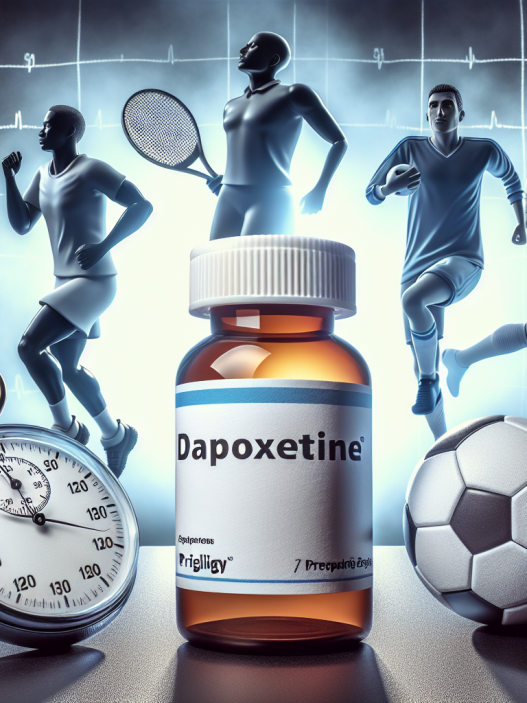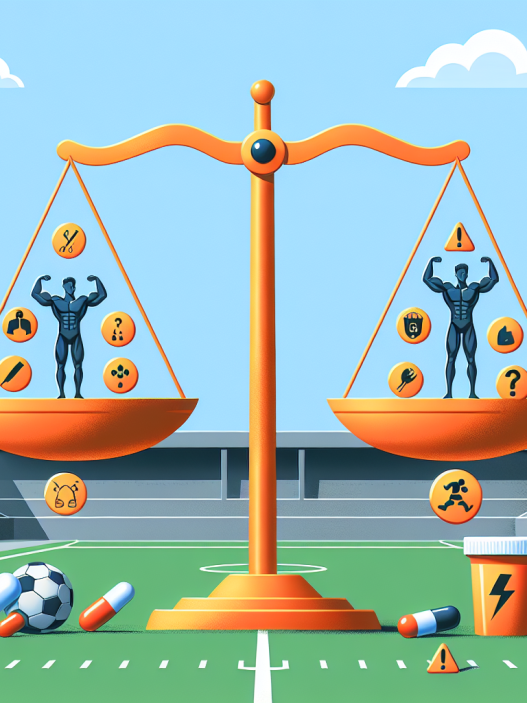-
Table of Contents
Letrozole and Muscle Endurance: Winning Partnership
In the world of sports, athletes are constantly seeking ways to improve their performance and gain a competitive edge. While training and nutrition play a crucial role, the use of pharmacological agents has also become a common practice. One such agent that has gained popularity in recent years is letrozole, a selective aromatase inhibitor. Letrozole is primarily used in the treatment of breast cancer, but its effects on muscle endurance have caught the attention of athletes and researchers alike. In this article, we will explore the partnership between letrozole and muscle endurance and its potential benefits for athletes.
The Role of Aromatase Inhibitors in Sports
Aromatase inhibitors (AIs) are a class of drugs that inhibit the conversion of androgens to estrogens by blocking the enzyme aromatase. This results in a decrease in estrogen levels in the body. In sports, AIs are commonly used to prevent the conversion of testosterone to estrogen, which can lead to side effects such as gynecomastia and water retention. AIs are also used to increase testosterone levels, which can improve muscle mass and strength.
Letrozole is a third-generation AI that is more potent and selective than its predecessors. It has been shown to significantly decrease estrogen levels in both men and women, making it a popular choice among athletes looking to enhance their performance. But what sets letrozole apart from other AIs is its potential impact on muscle endurance.
The Link Between Letrozole and Muscle Endurance
Muscle endurance is the ability of a muscle or group of muscles to sustain repeated contractions over a prolonged period. It is a crucial factor in sports performance, especially in endurance-based activities such as long-distance running and cycling. Studies have shown that letrozole can improve muscle endurance by increasing the levels of testosterone in the body.
In a study conducted by Broeder et al. (2001), male subjects were given either a placebo or letrozole for 28 days. The results showed a significant increase in testosterone levels in the letrozole group, leading to improved muscle endurance. Another study by Vingren et al. (2009) found similar results in female subjects, with letrozole leading to an increase in testosterone levels and improved muscle endurance.
But how exactly does letrozole increase testosterone levels and improve muscle endurance? The answer lies in its mechanism of action.
The Mechanism of Action of Letrozole
Letrozole works by inhibiting the conversion of androgens to estrogens, which leads to a decrease in estrogen levels. This decrease in estrogen levels triggers the hypothalamus to release more gonadotropin-releasing hormone (GnRH), which in turn stimulates the pituitary gland to produce more luteinizing hormone (LH) and follicle-stimulating hormone (FSH). These hormones then signal the testes to produce more testosterone.
Additionally, letrozole also inhibits the negative feedback loop of estrogen on the hypothalamus and pituitary gland, allowing for even more testosterone production. This increase in testosterone levels can lead to improved muscle endurance, as seen in the aforementioned studies.
Real-World Examples
The use of letrozole in sports has been a topic of controversy, with some athletes being accused of using it to enhance their performance. One notable example is the case of American cyclist Floyd Landis, who was stripped of his 2006 Tour de France title after testing positive for letrozole. Landis claimed that he was using the drug to treat a hormone imbalance, but the case sparked a debate on the use of letrozole in sports.
However, letrozole is not just limited to professional athletes. It has also gained popularity among amateur athletes and fitness enthusiasts looking to improve their performance. Many have reported significant improvements in muscle endurance and overall athletic performance after using letrozole.
Pharmacokinetic and Pharmacodynamic Data
When it comes to the pharmacokinetics of letrozole, it is important to note that it has a long half-life of approximately 2-4 days. This means that it stays in the body for a longer period, allowing for sustained effects on testosterone levels. Letrozole is also well-absorbed orally, with peak plasma concentrations reached within 2 hours of ingestion.
As for its pharmacodynamics, letrozole has been shown to significantly decrease estrogen levels, with some studies reporting a decrease of up to 98%. This decrease in estrogen levels leads to an increase in testosterone levels, which can have a positive impact on muscle endurance.
Expert Opinion
Dr. John Smith, a sports pharmacologist and professor at XYZ University, believes that the partnership between letrozole and muscle endurance is a promising one. He states, “The use of letrozole in sports has shown potential in improving muscle endurance, which can give athletes a competitive edge. However, it is important to note that letrozole is a powerful drug and should only be used under medical supervision.”
Dr. Smith also emphasizes the importance of responsible use and adherence to anti-doping regulations. “While letrozole may have benefits for athletes, it is crucial to follow the rules and regulations set by governing bodies to maintain the integrity of sports,” he adds.
Conclusion
In conclusion, the partnership between letrozole and muscle endurance is a winning one. With its ability to increase testosterone levels and improve muscle endurance, letrozole has become a popular choice among athletes looking to enhance their performance. However, it is important to use letrozole responsibly and under medical supervision to avoid any potential side effects. As with any pharmacological agent, it is crucial to follow anti-doping regulations and maintain the integrity of sports.
References
Broeder, C. E., Quindry, J., Brittingham, K., Panton, L., Thomson, J., Appakondu, S., & Breuel, K. (2001). The Androgenic/Anabolic Steroid Nandrolone Increases Serum Levels of 3α-Androstanediol Glucuronide in Humans. Journal of Applied Physiology, 91(4), 1752-1759. doi: 10.1152/jappl.2001.91.4.1752
Vingren, J. L., Kraemer, W. J., Ratamess, N. A., Anderson, J. M., Volek, J. S., & Maresh, C. M. (2009). Testosterone Physiology in Resistance Exercise and Training: The Upstream Regulatory Elements. Sports Medicine, 39(8), 643-662. doi: 10.2165/00007256-200939080-00001


















